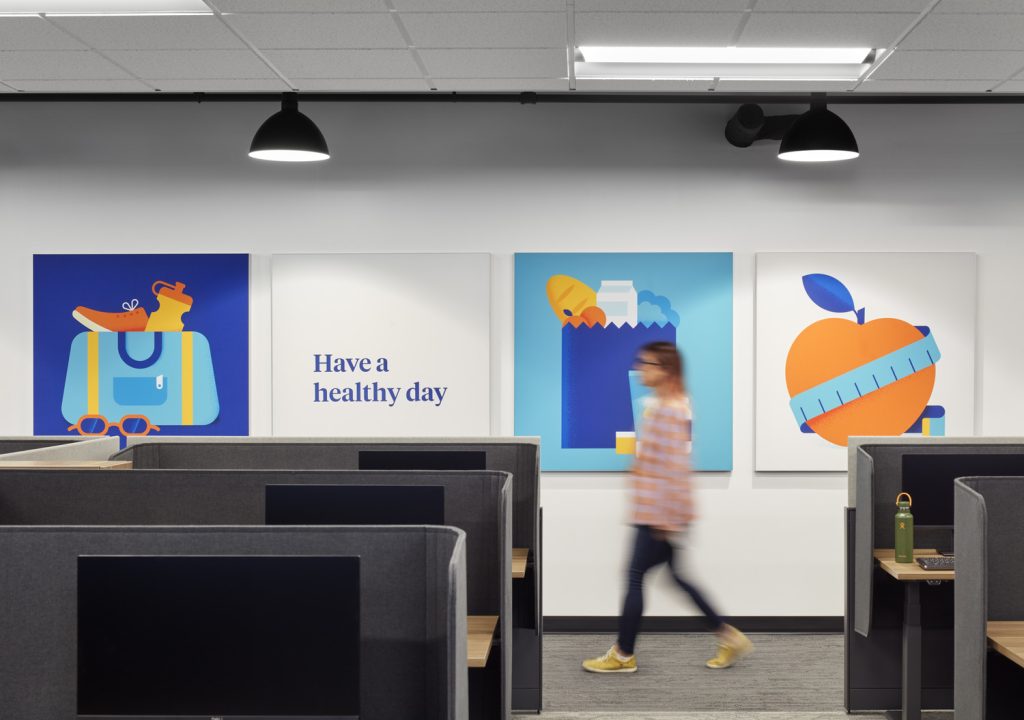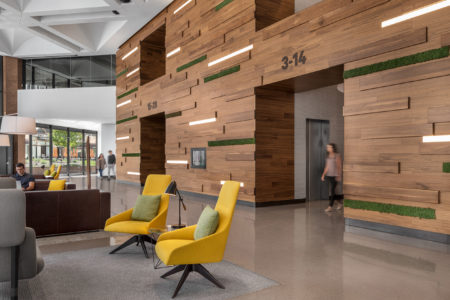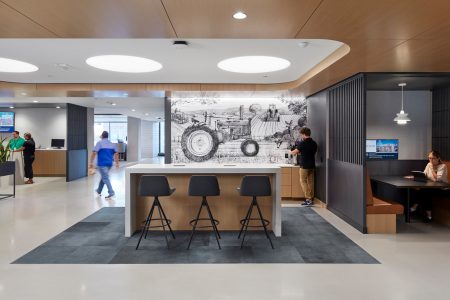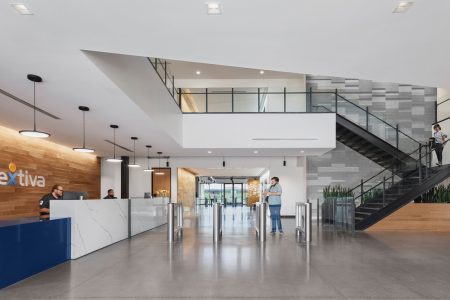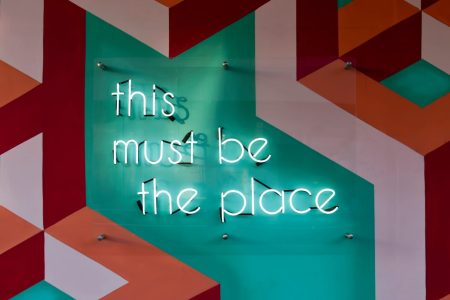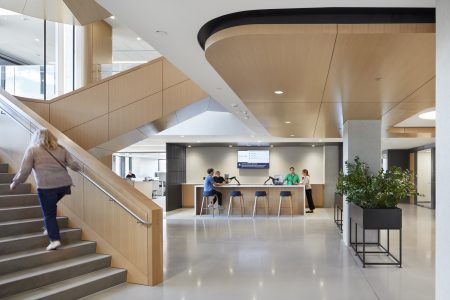Designing the Workplace for Human Resiliency
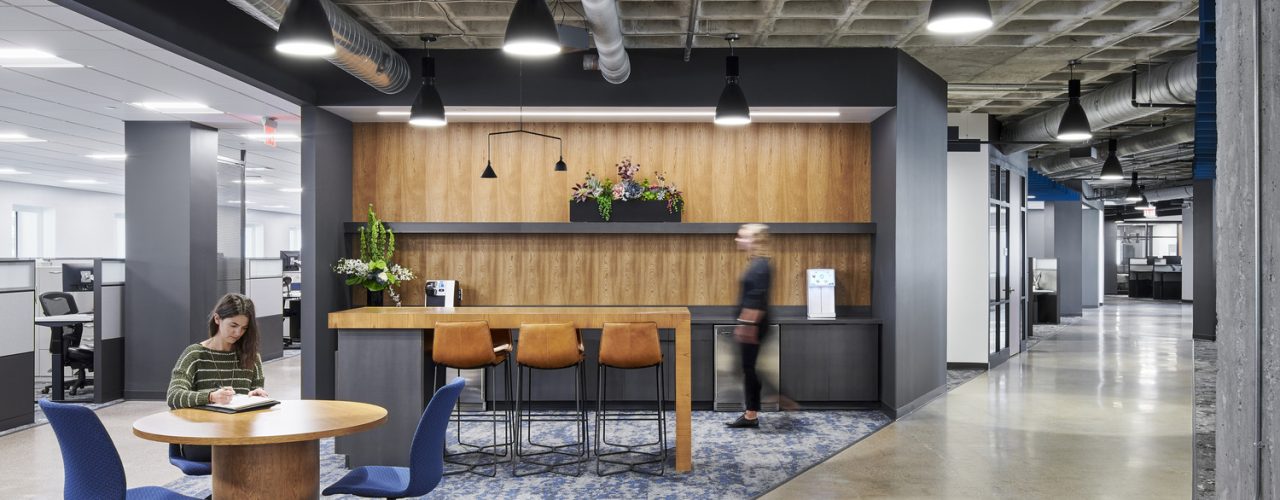
Workplace Designer Allison Stratton details six ways that the built environment can bolster employee resilience during and after times of high stress and confusion.
In some of RSP’s recent workplace insight articles, we stressed the importance of a resilient workplace, flexible to respond to sudden changes to our medical, political or social climates. While all of that is crucial, we can’t forget the importance of human resiliency and the role of workplace design in helping workers bounce back from challenges and unwelcome distractions quickly and gracefully.
This past year, we have seen companies embrace mental and emotional wellbeing like never before. We have seen an uptick of business articles advising us how to get through a workday when our emotional reserves are low. People who have never experienced trauma or anxiety before are finding themselves without coping mechanisms to combat excess worry and stress.
We know that workplace design has a great influence on users’ emotions, cognitive functions, navigation, and sense of security. RSP believes that if we can design offices where people feel safe and supported, they will be more apt to choose to come in and engage in the workplace community rather than work from home. We have combined our understanding of trauma-informed design, equity, diversity and inclusion (EDI), and wellbeing in the workplace to identify six ways the built environment can bolster employee resilience during and after times of high stress and confusion.
1: DIGNITY + SELF ESTEEM
A workplace that is designed to meet everyone where they are at without barriers to navigation, collaboration, and sharing ideas fosters a sense of worthiness and being “enough.” Making sure employees have the intrinsic knowledge that they have a seat at the table encourages healthy collaboration and bolsters confidence in decision making. It is important that everyone feel their voice is being heard and valued.
2: EMPOWERMENT + PERSONAL TRUST
Accommodating all mental, emotional, social and physical abilities is important to showing that every employee is worthy and valued in a workplace. Designers can do this by providing a variety of visual and audio cues, stimuli and wayfinding.
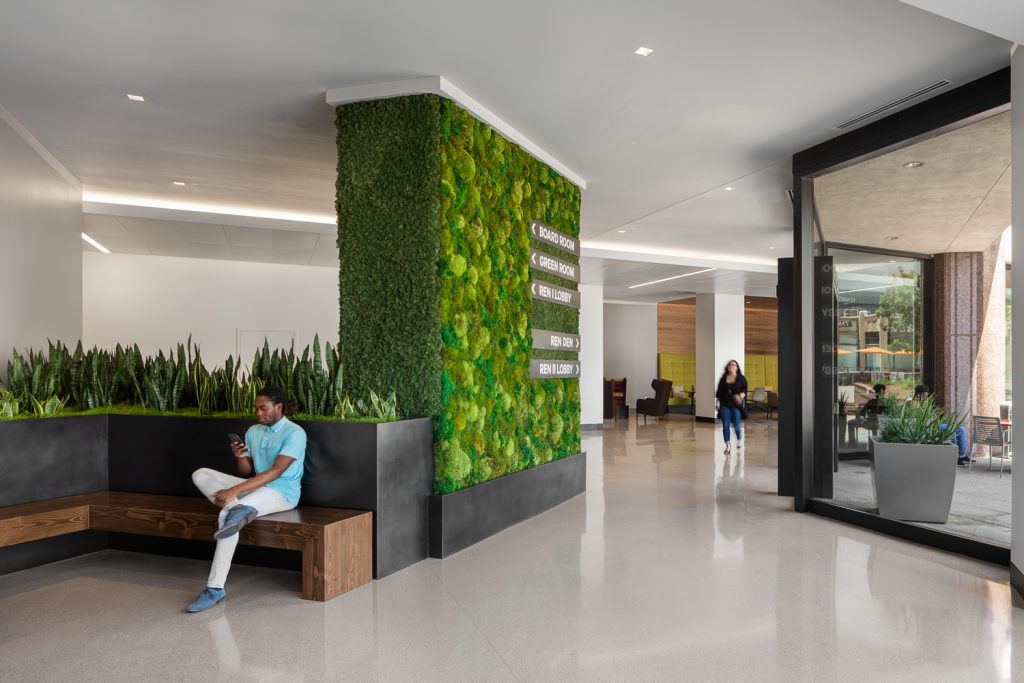
3: SECURITY, PRIVACY + PERSONAL SPACE
Workplace design can provide everyone with the tools to confidently navigate and assess the environment at any given moment. Combining these tools with clear, transparent cleaning procedures and protocols can increase an employee’s willingness to return to the office post-pandemic.
4: STRESS MANAGEMENT
As we re-enter the workplace, there will likely be increased entry requirements such as temperature screening and sanitation stations. For some, this first interaction as they arrive will feel stressful and invasive. Designers can offer spaces for reflection, rejuvenation and decompression that are immediately accessible upon safe entry. Clarity and confidence in navigating the space also removes stress from the workplace experience, as does offering a variety of work modes clearly supported and communicated throughout.
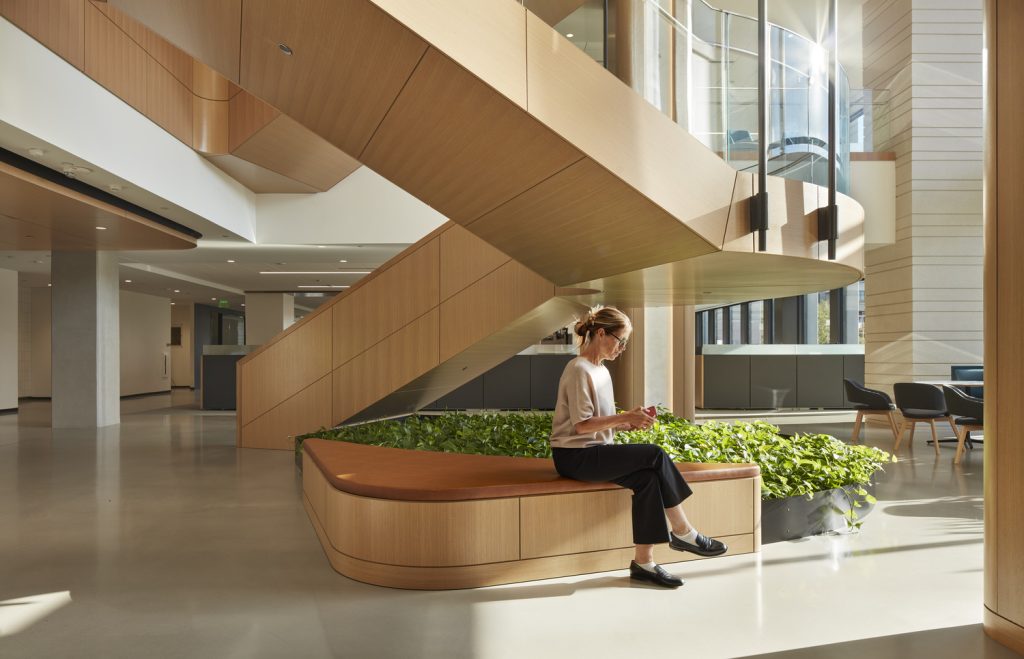
5: SENSE OF COMMUNITY + SUPPORT
This past year has meant profound isolation and loneliness for a great many people. The return to the workplace should focus on coming together and supporting each other. Design elements as simple as graphics or signage saying “You Belong Here” or “Welcome” can boost morale. Office spaces are a fantastic opportunity to explicitly acknowledge and celebrate employee contributions. Equitable and inclusive design can work to bring people together in the ways they navigate and interact with the environment. Designing for all abilities will always benefit the whole population.
6: BEAUTY + MEANING
Safety and good health should not come at the cost of joy and comfort. Designers can use light, color, pattern and materials to encourage physical distancing. Looking upward is a universal gesture of hope, and that can be achieved by implementing elements of interest overhead. Design elements that encourage personalization can both empower employees and add an inviting feel to the space. An easy to navigate, clean, safe space can and should be inviting, inspiring and beautiful!
